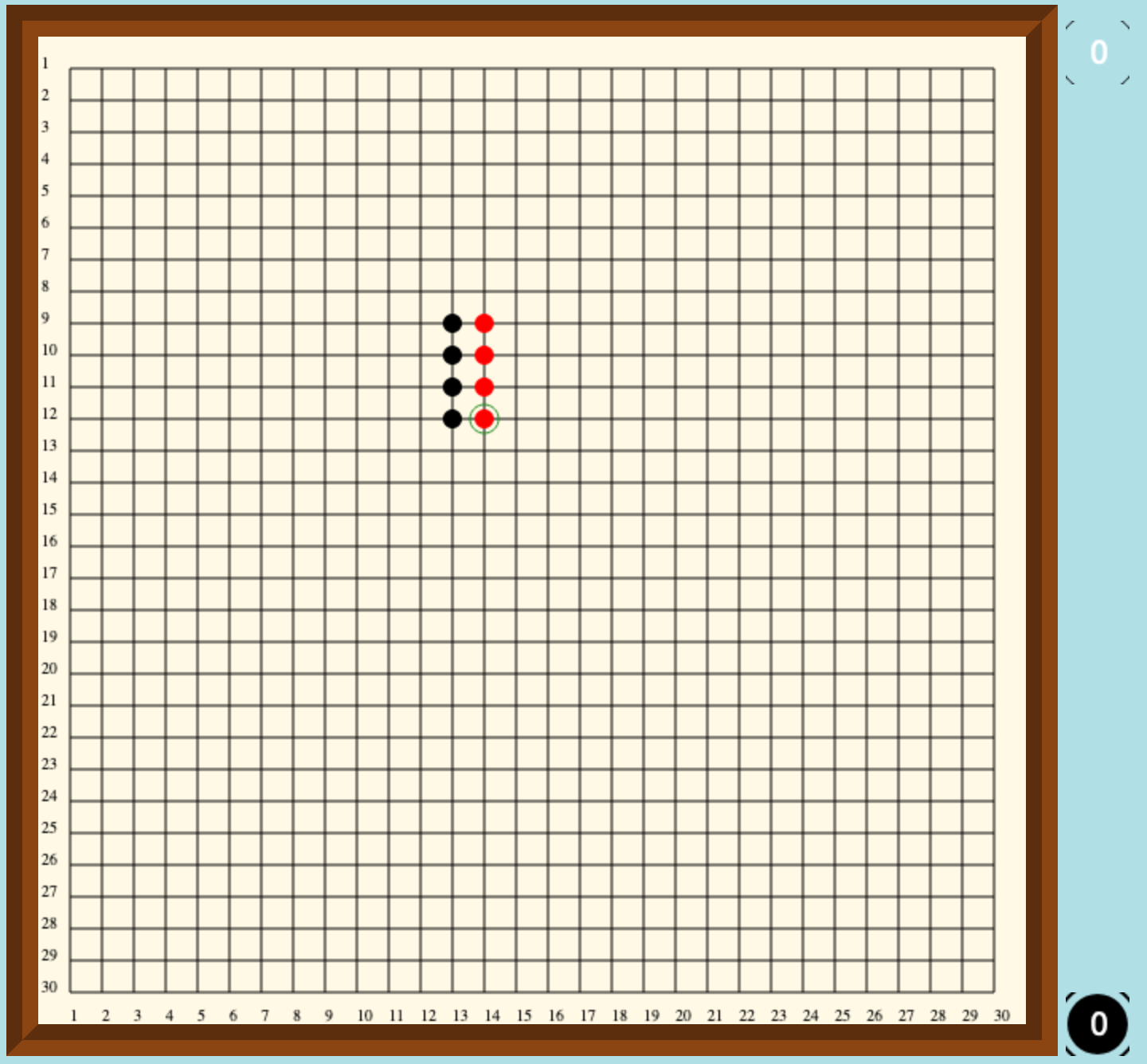
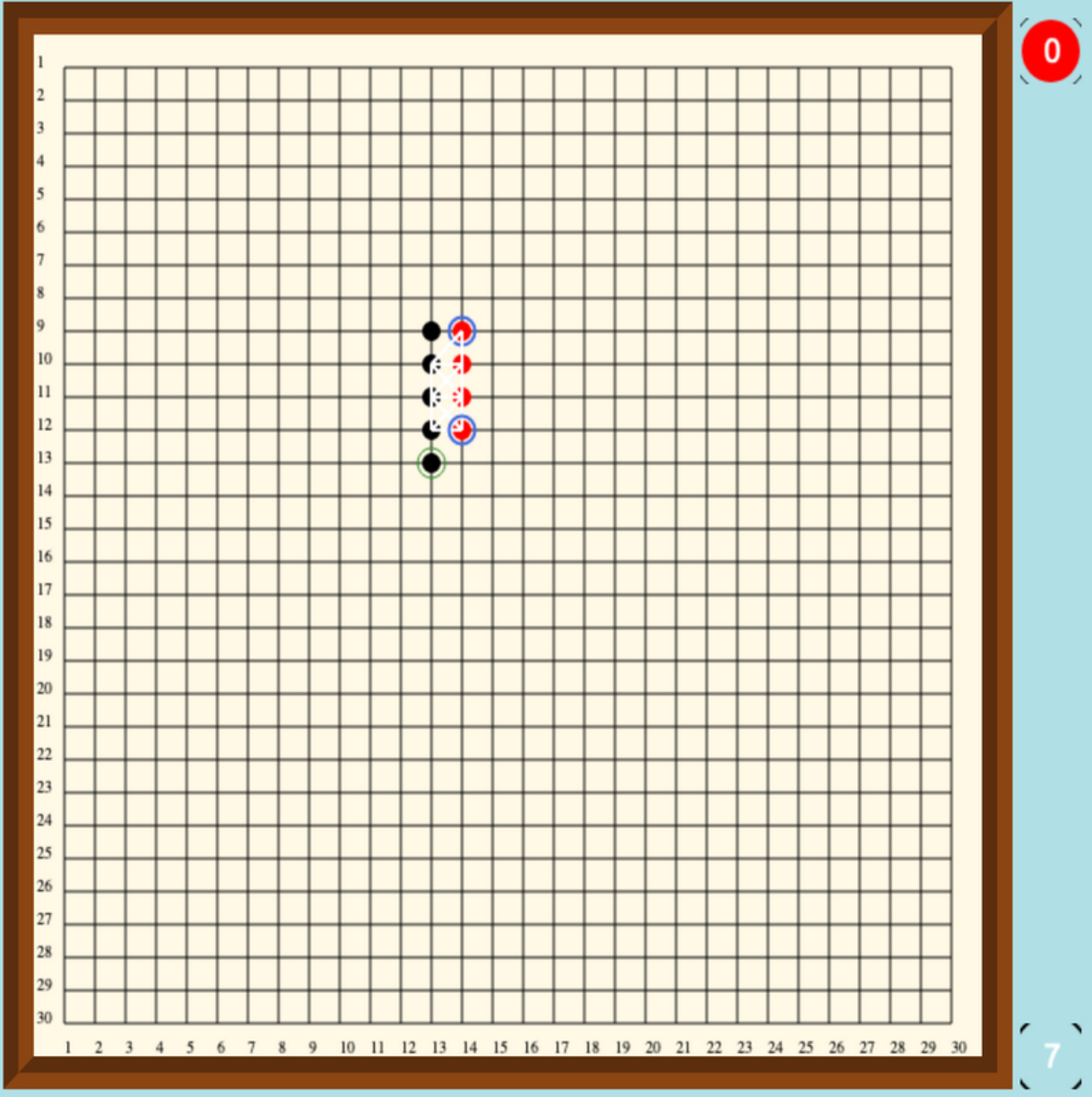
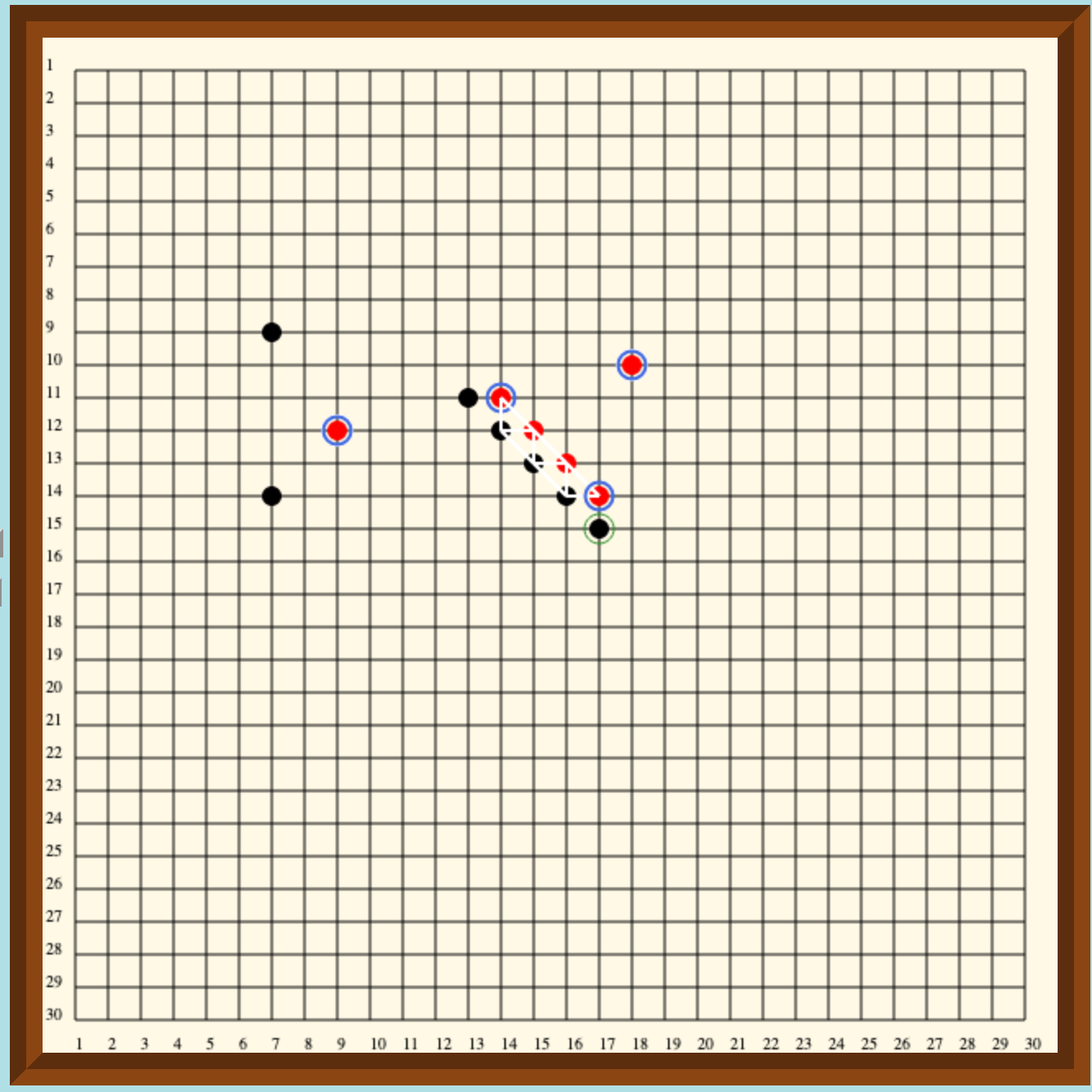

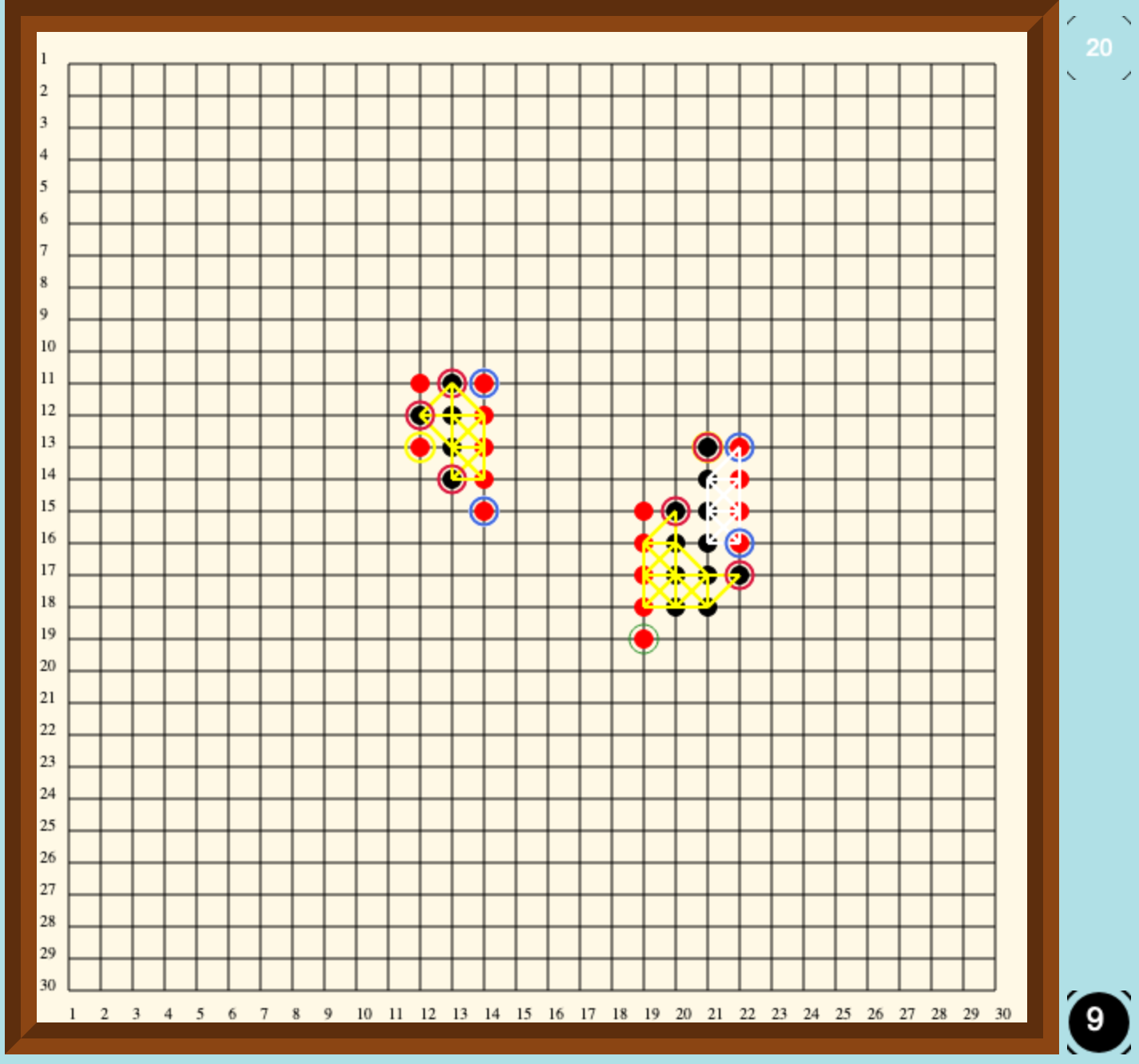
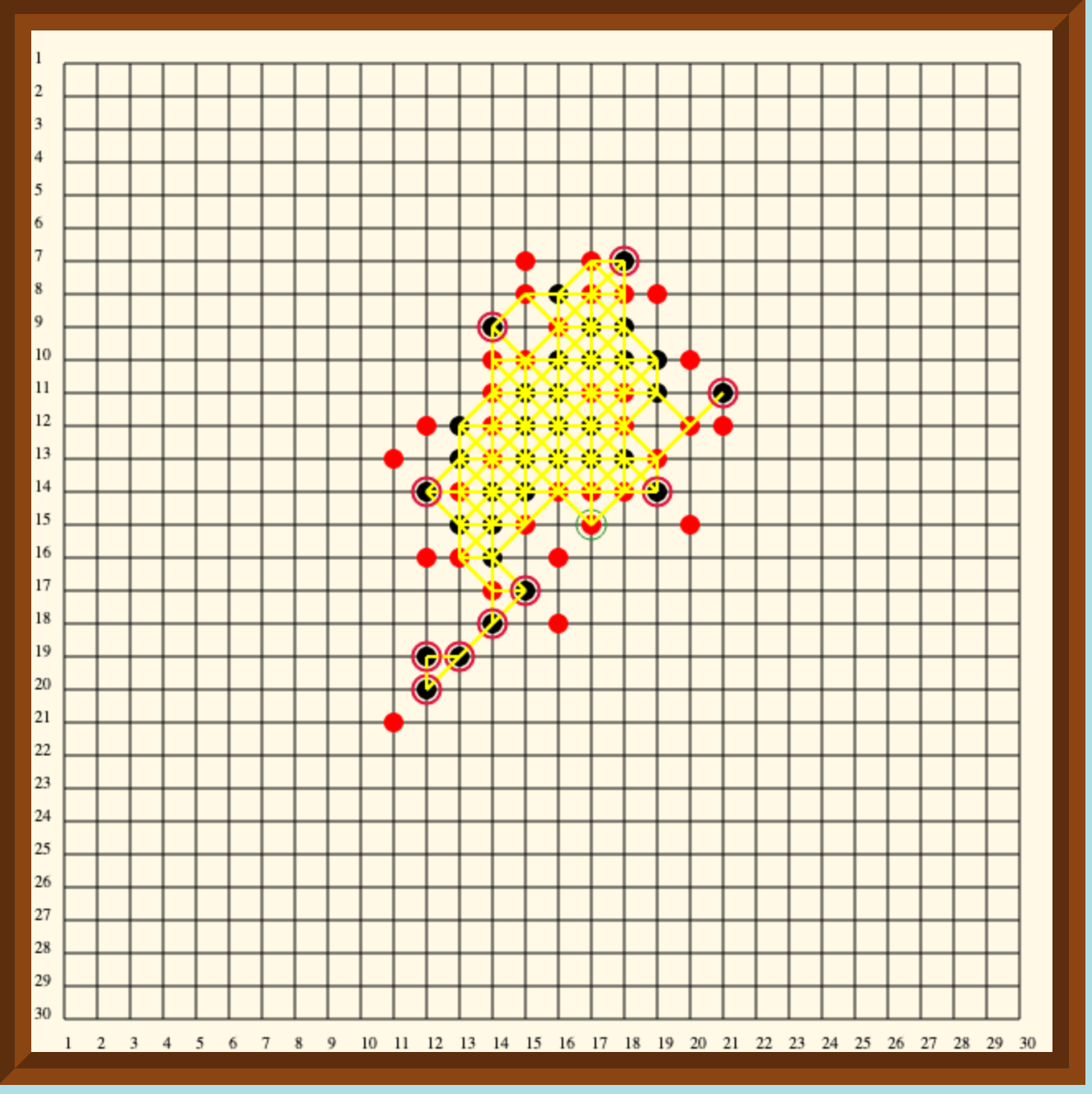





In fig.1 if Black plays at (13,13) we get to fig.2 where the lines for Cast 0 are added. From the black piece at (13,12) a straight line is drawn to captured pieces at (13,11), (14,11), (14,12). Note that
a line is not drawn to the black piece at (13,13) because less than 4 pieces belonging to the winner neighbor it; it is considered a shifted piece. A shifted piece can be used by the winner in the next cast.
So black can use (13,13) and (13,9) in Cast 1.
Similarly, a piece belonging to the loser surrounded by less than 4 pieces belonging to the winner can be used by the loser, but the point is counted towards the winner.
In fig.2 (14,12) and (14,9) can be used by Red in Cast 1, but the points belong to Black. Pieces like (14,12) and (14,9) are called recapturable and are designated by a circle(blue/red) drawn around them.
In fig.l1 a circle is not drawn around (7,9),(7,14) and (13,11) since they have shifted. A circle is drawn around (9,12) because the opponent's pieces are always captured and cannot shift. In the case of (9,12) there are no other pieces around it so a circle
is drawn around to indicated that is has been captured.
In fig.L2 if Red plays at (20,12) we get fig.L3. red piece (12,11) has shifted so no circle/line is drawn; red piece (12,13) has been captured because they are 4 pieces belonging to Red
neighboring it. But, lines are not drawn to the neighboring pieces since they are from a different cast. Instead a circle is drawn around it to designate that it belongs to Red.
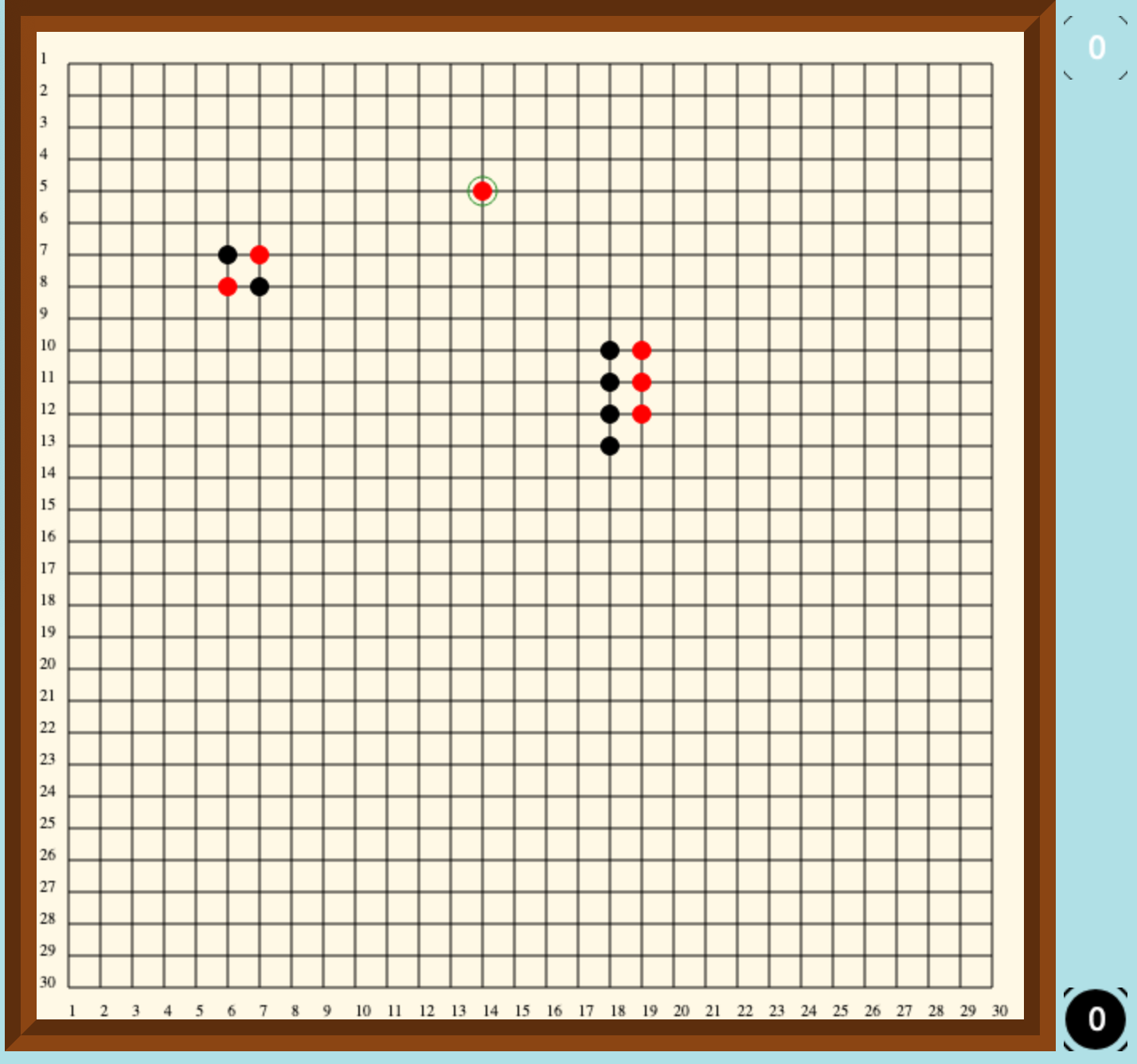
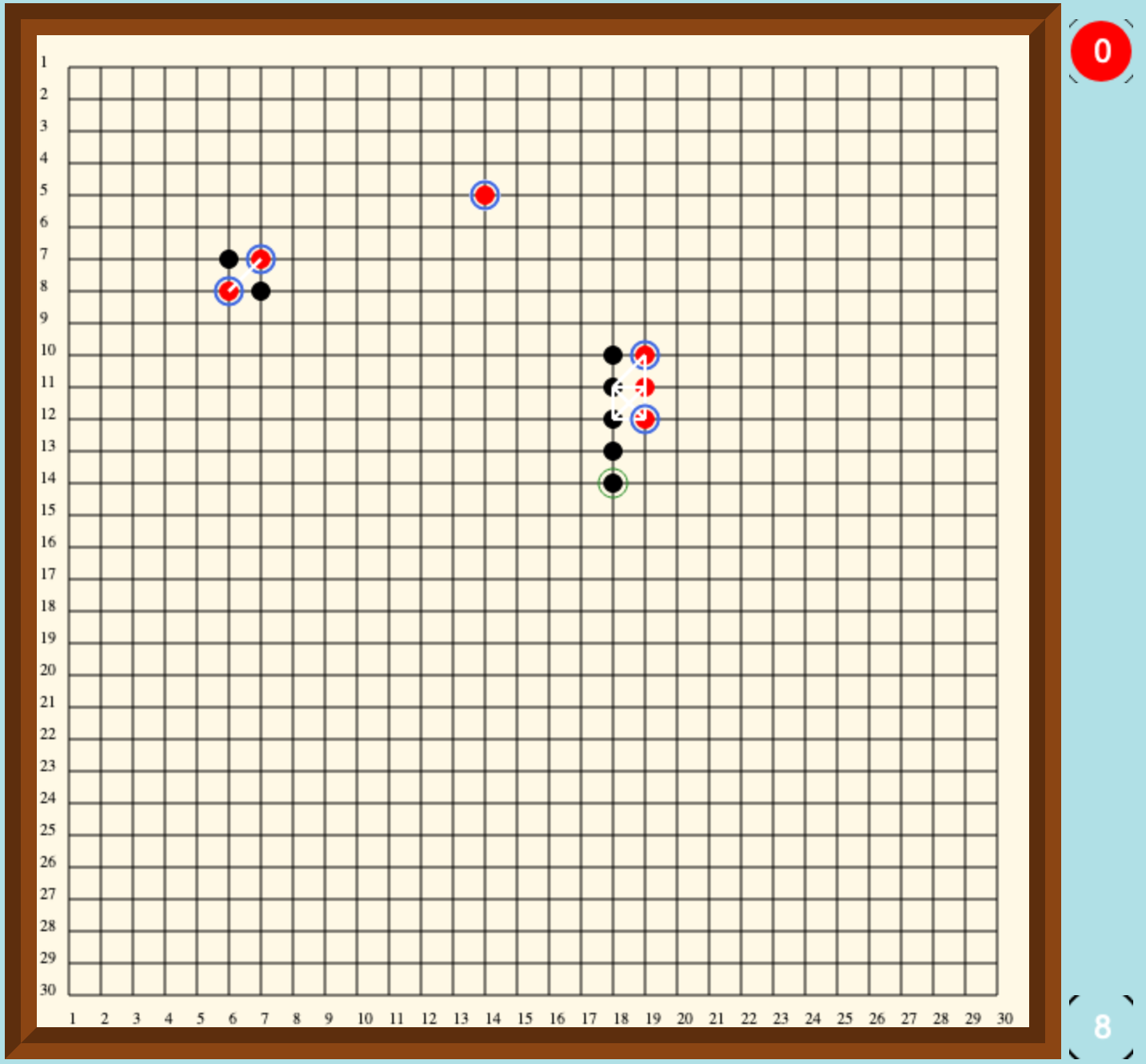
in fig.3 if Black plays at (14,18) we get fig.4. Note that black's pieces at (6,7), (7,8), (18,14), (18,13) and (18,10) have shifted to Cast 1 because the number of pieces belonging to Black bordering
them are less than 4. The pieces with with lines going through them as well as the ones inside a blue circle have been captured by Black. The pieces inside the blue circles are recapturables for Red.
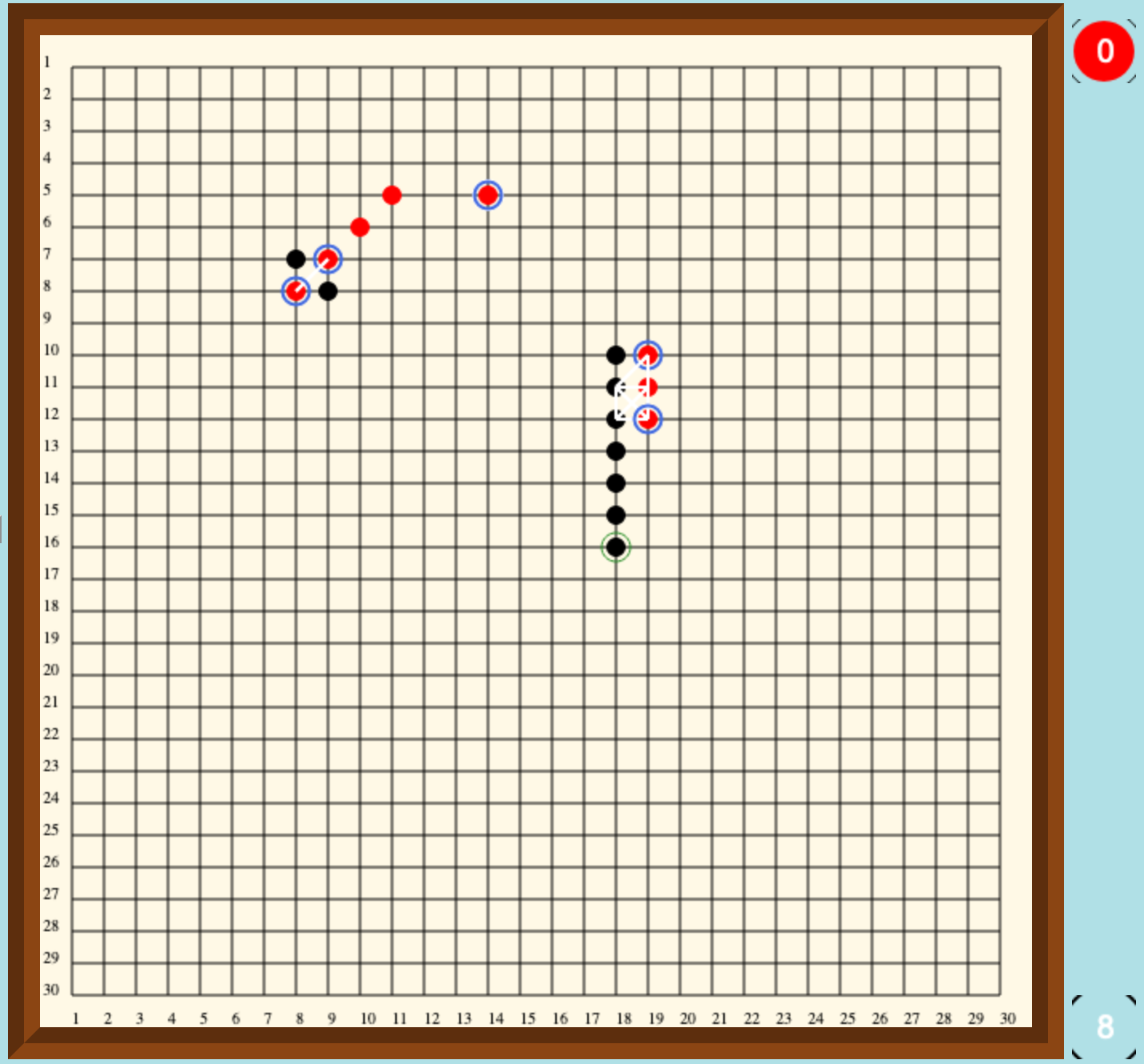
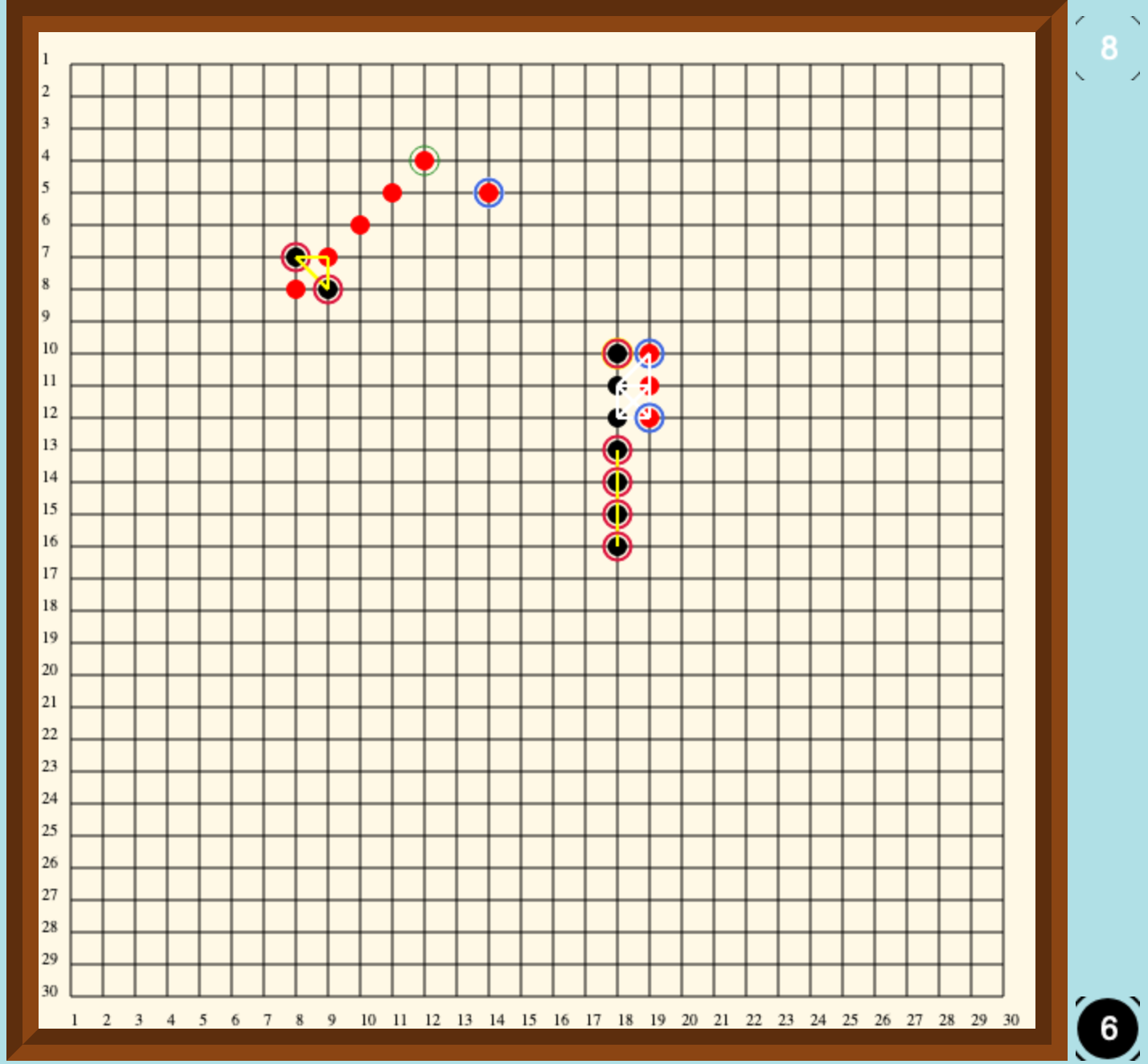
In fig.5 if Red moves at (12,4) we get fig.6 where Red has won by connecting with the two recapturables at (8,8) and (9,7). Only the recapturables that were part of the chain of fives for Red are recaptured.
The ones at (14,5), (19,10) and (19,12) still belong to Black.
Now the recapturable at (8,8) has shifted because there are only 3 pieces belonging to Red around it. The piece at (9,7) has been captured because it there are 4 pieces belonging to Red around it. First the Black pieces are captured,second the
recaptubales are recaptured and then they are shifted.
Note that Black cannot use Red's recapturables for creating a chain of 5 even though he owns them and vice versa for Red.
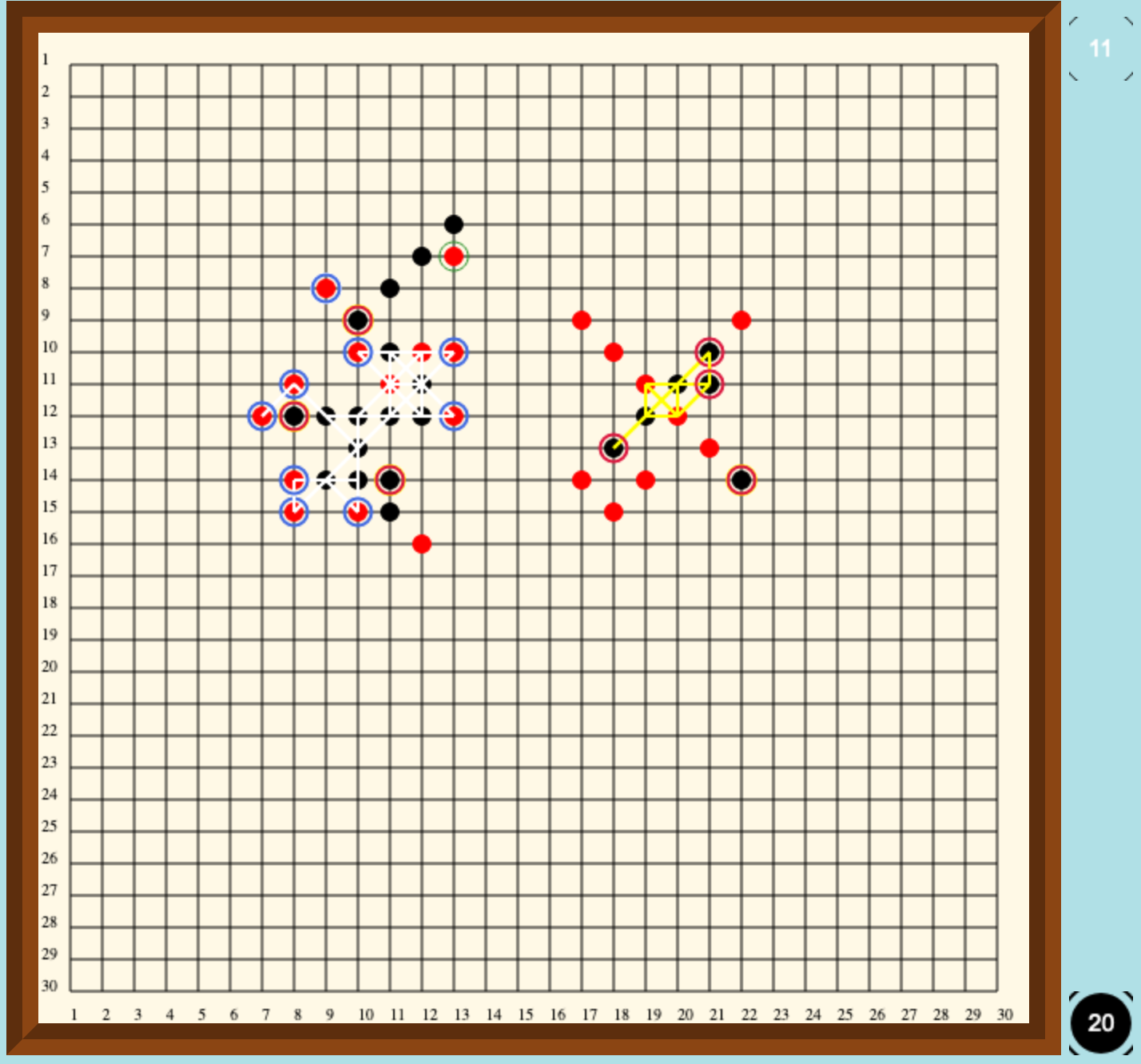
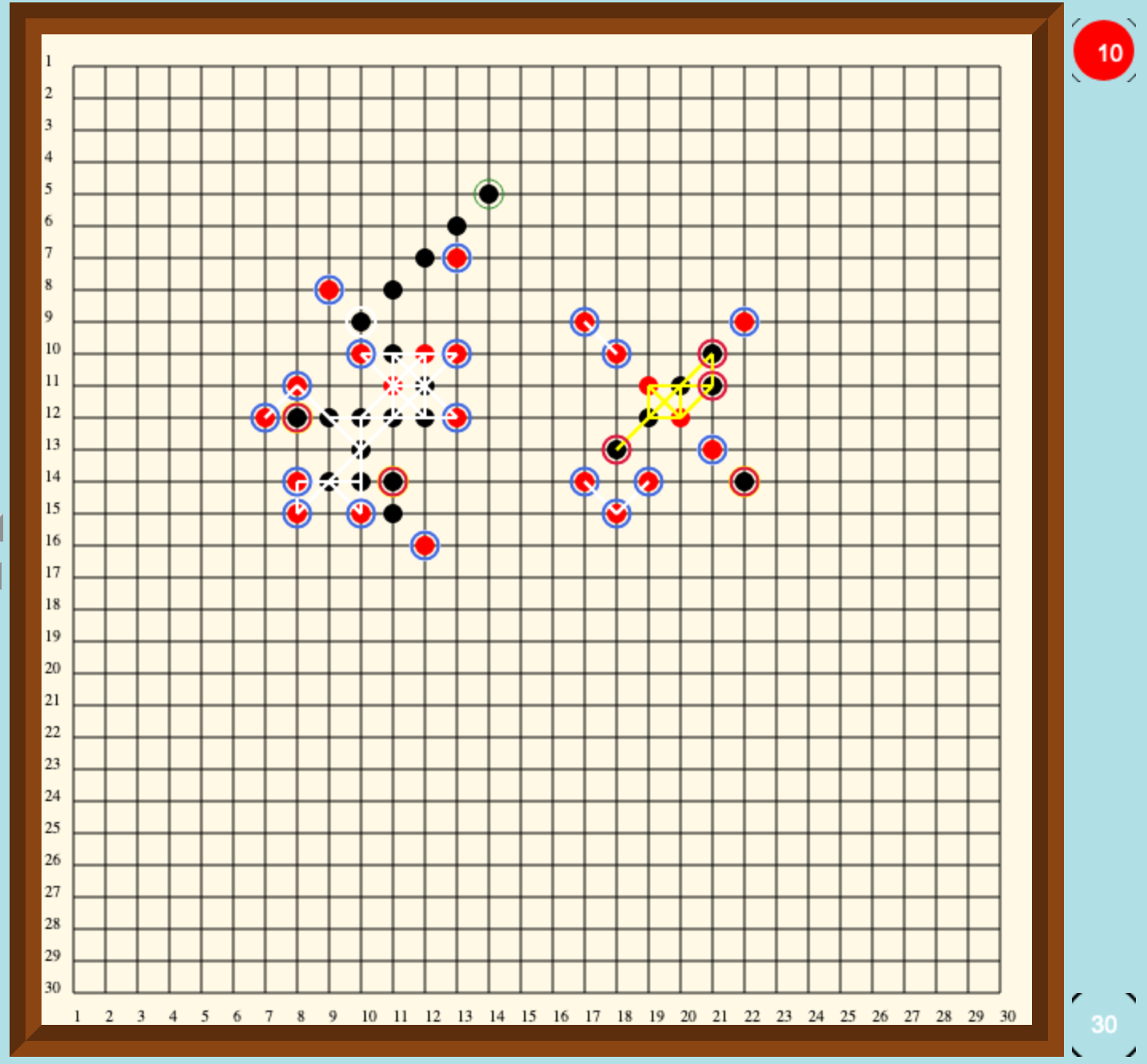
In fig.7 if Red plays at (14,5) we get fig.8. Black rescues the piece at (10,9) the piece does not shift because the 4 pieces neighboring it belongs to Black. Note that a circle is drawn around it and not a line to the other pieces
since it belongs to a different cast then them.
The black piece at (11,15) does not shift since there are only 3 pieces belonging to black around it, the recapturable at (11,14) belongs to Red.
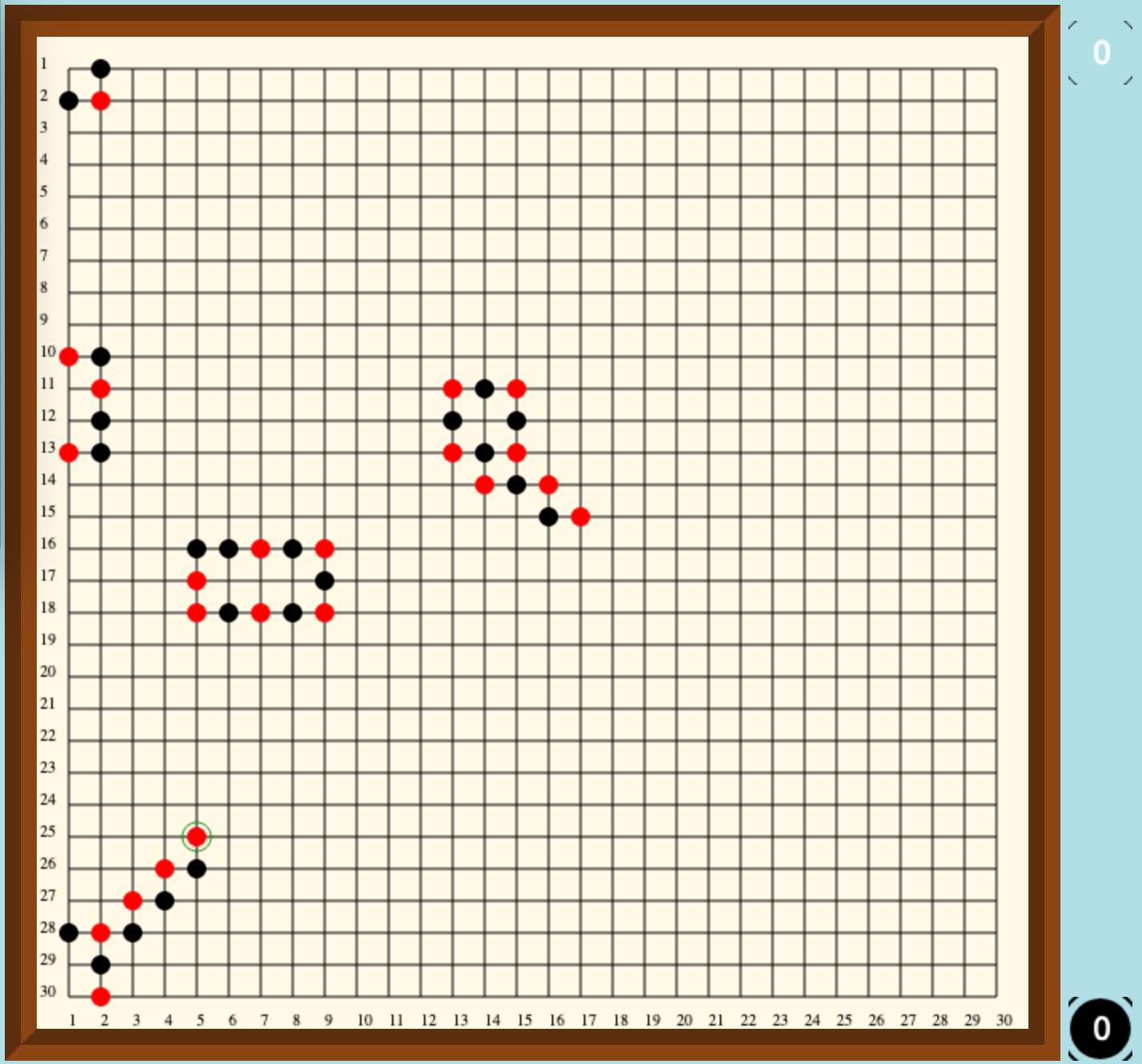
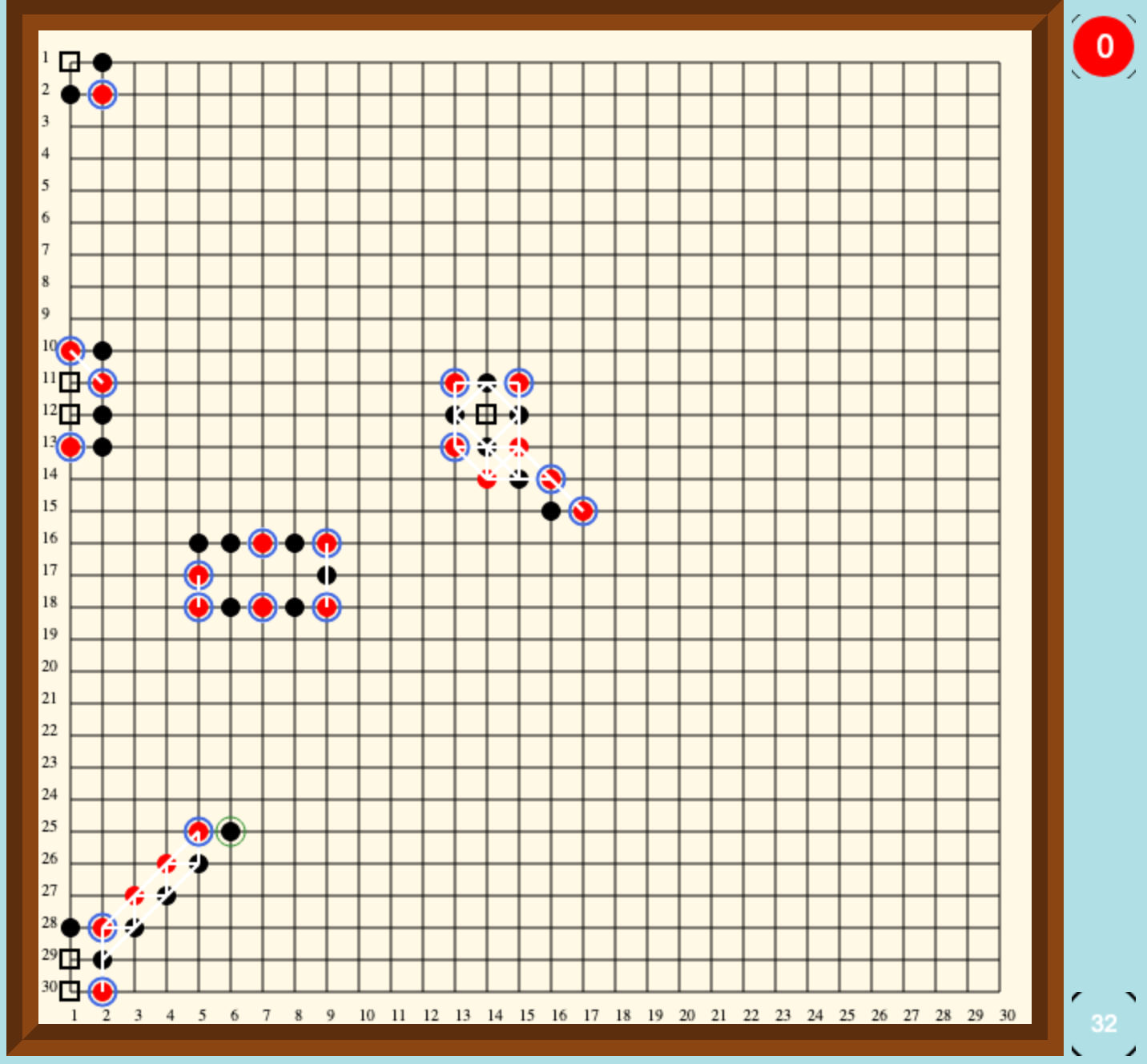
In fig.9 if Black plays at (6,25) we get fig.10. The intersections with the squares have been sieged by Black because after the cast was over they were surrounded by pieces belonging to Black. Note that the intersections (6.17), (7,17) and (8,17) are not sieged because they are more than 2 adjacent intersections. At most 2 adjacent intersections can be sieged.
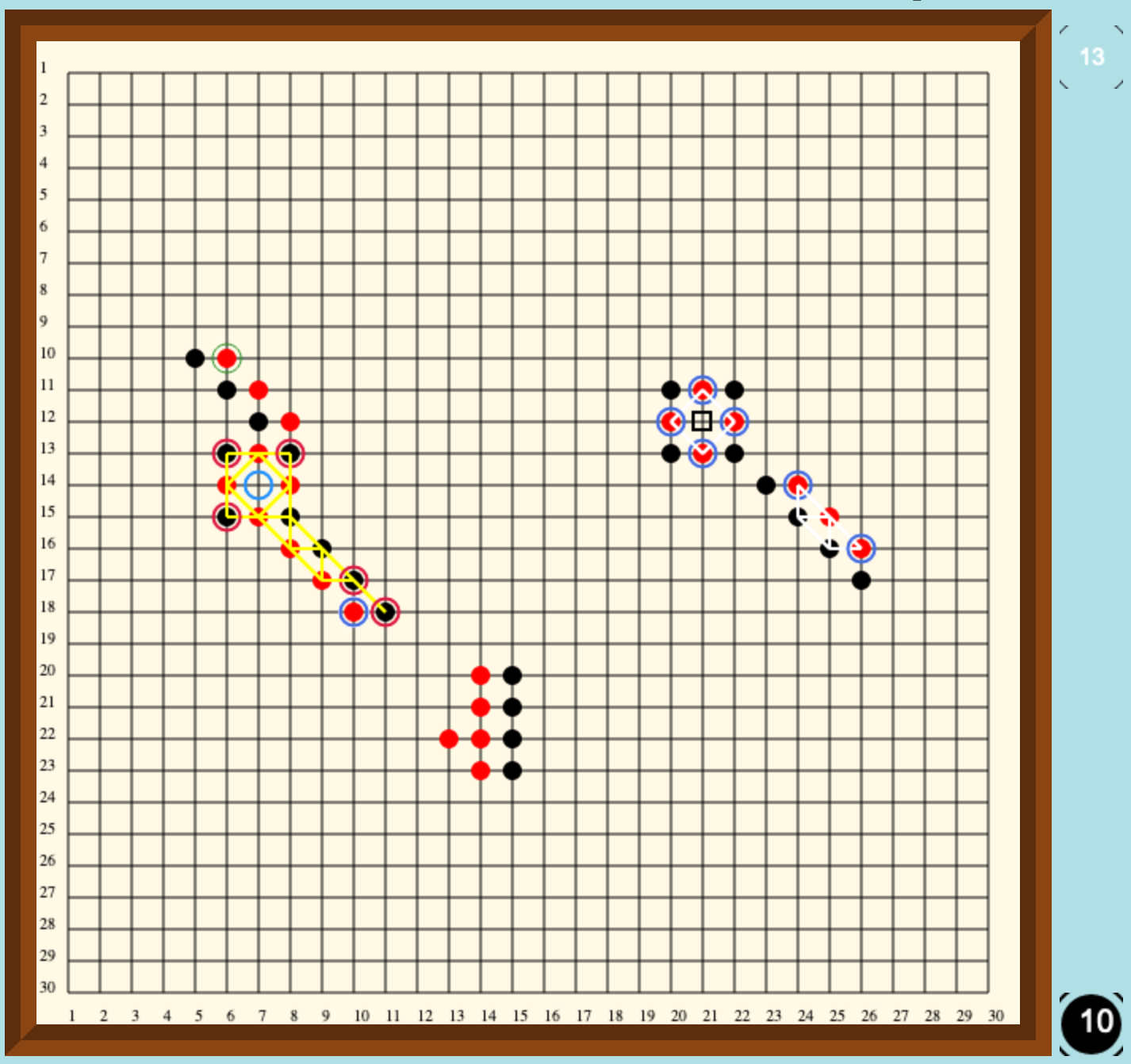
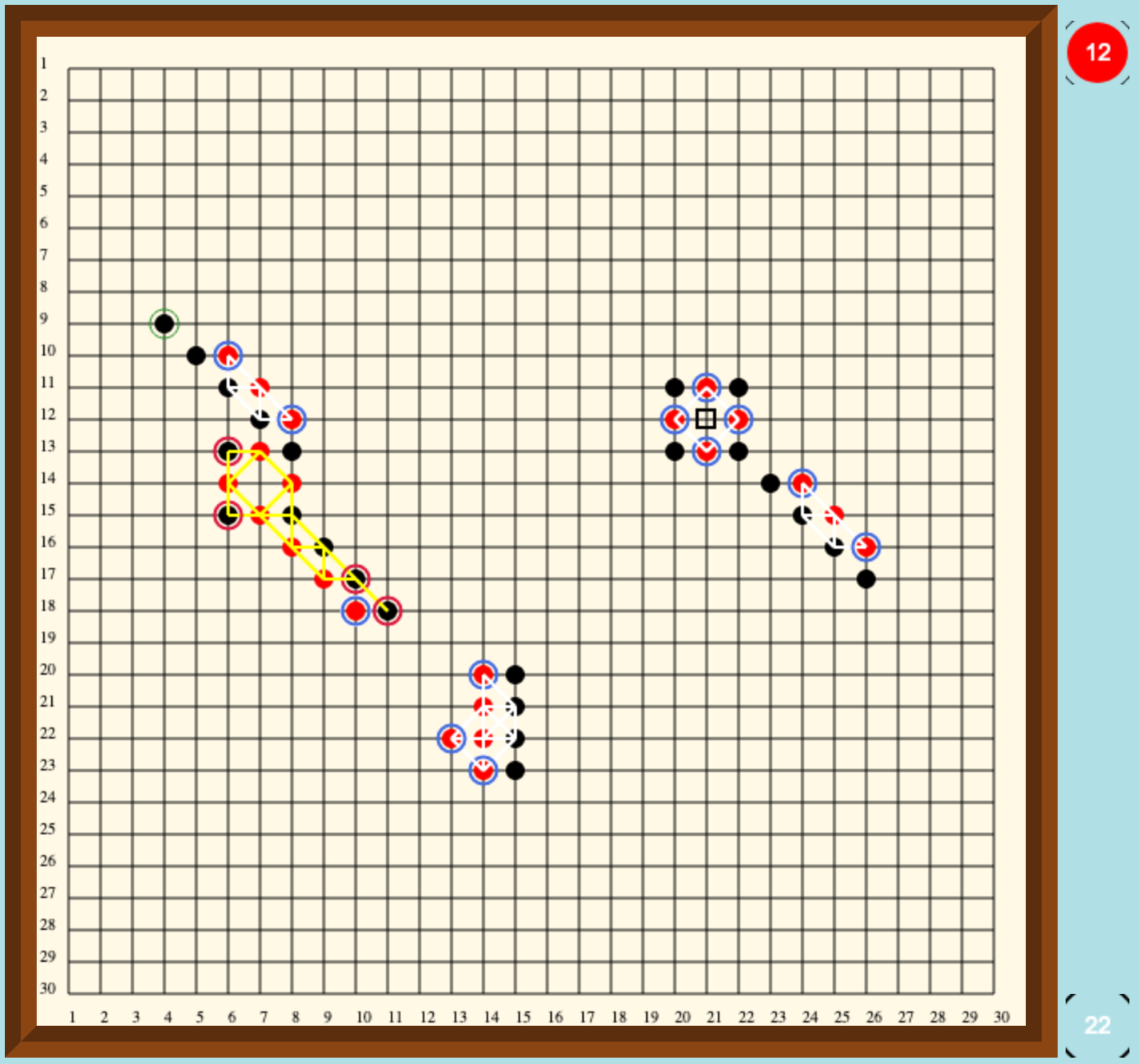
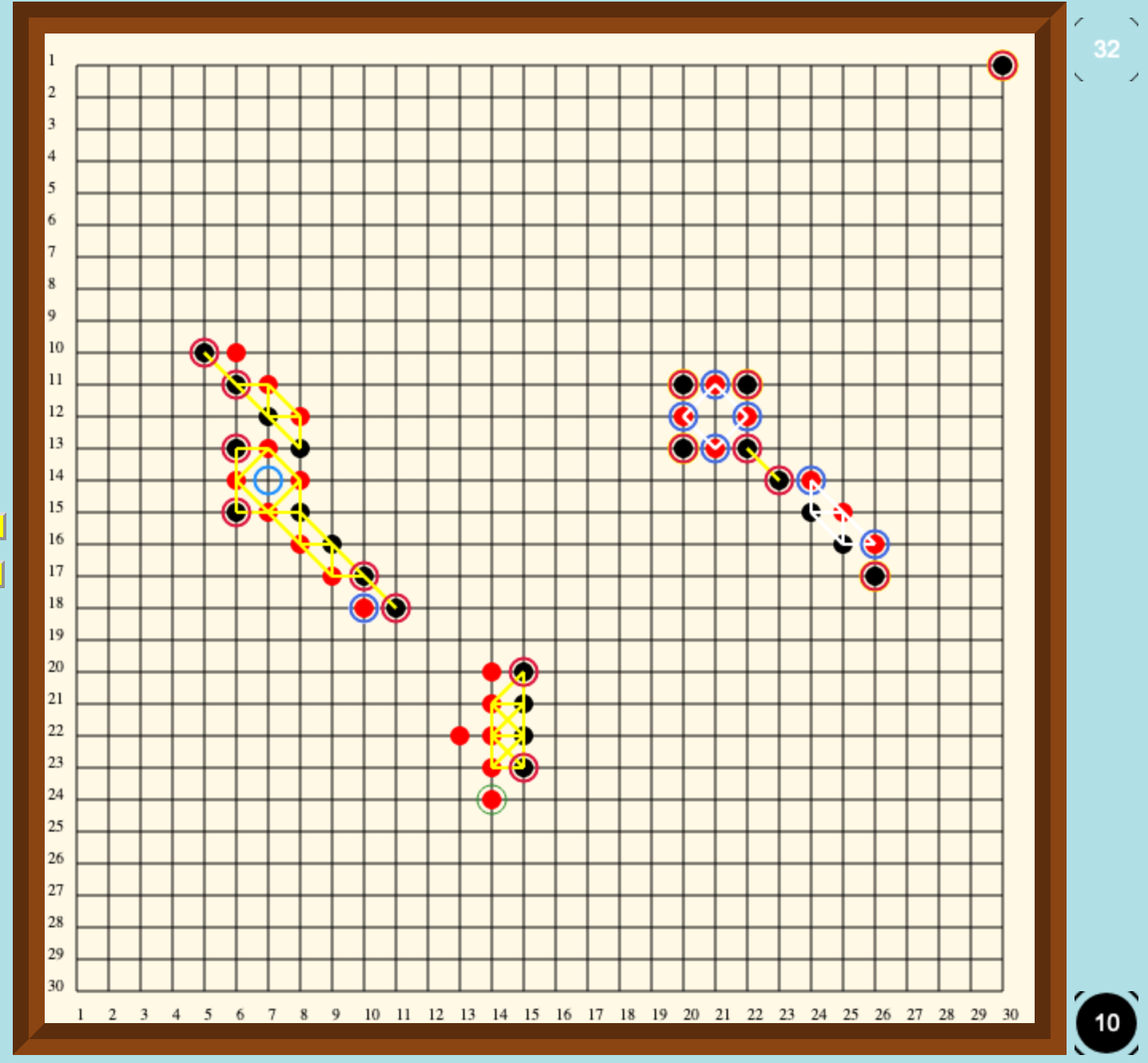
In fig.11 if Black plays (4,9), we get fig.12. Black piece at (8,13) shifts and break Red's sieges at (7,14).
Now if it is Red's turn from fig.11 and Red plays (14,24), we get fig.13. The black pieces at (20,11), (20, 13), (22,11) and (22,13) are captured and Black's siege of (21,12) is broken.
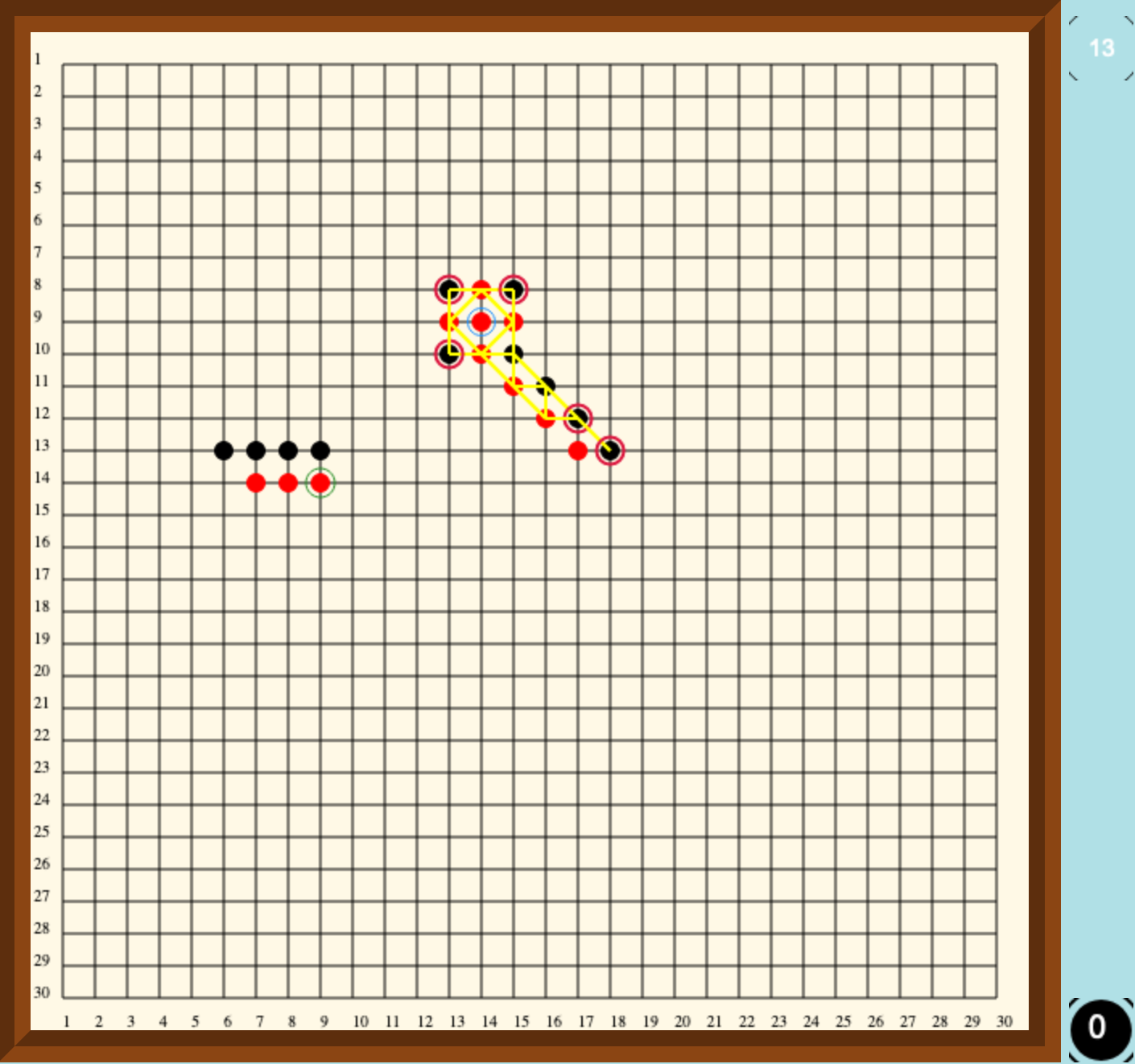
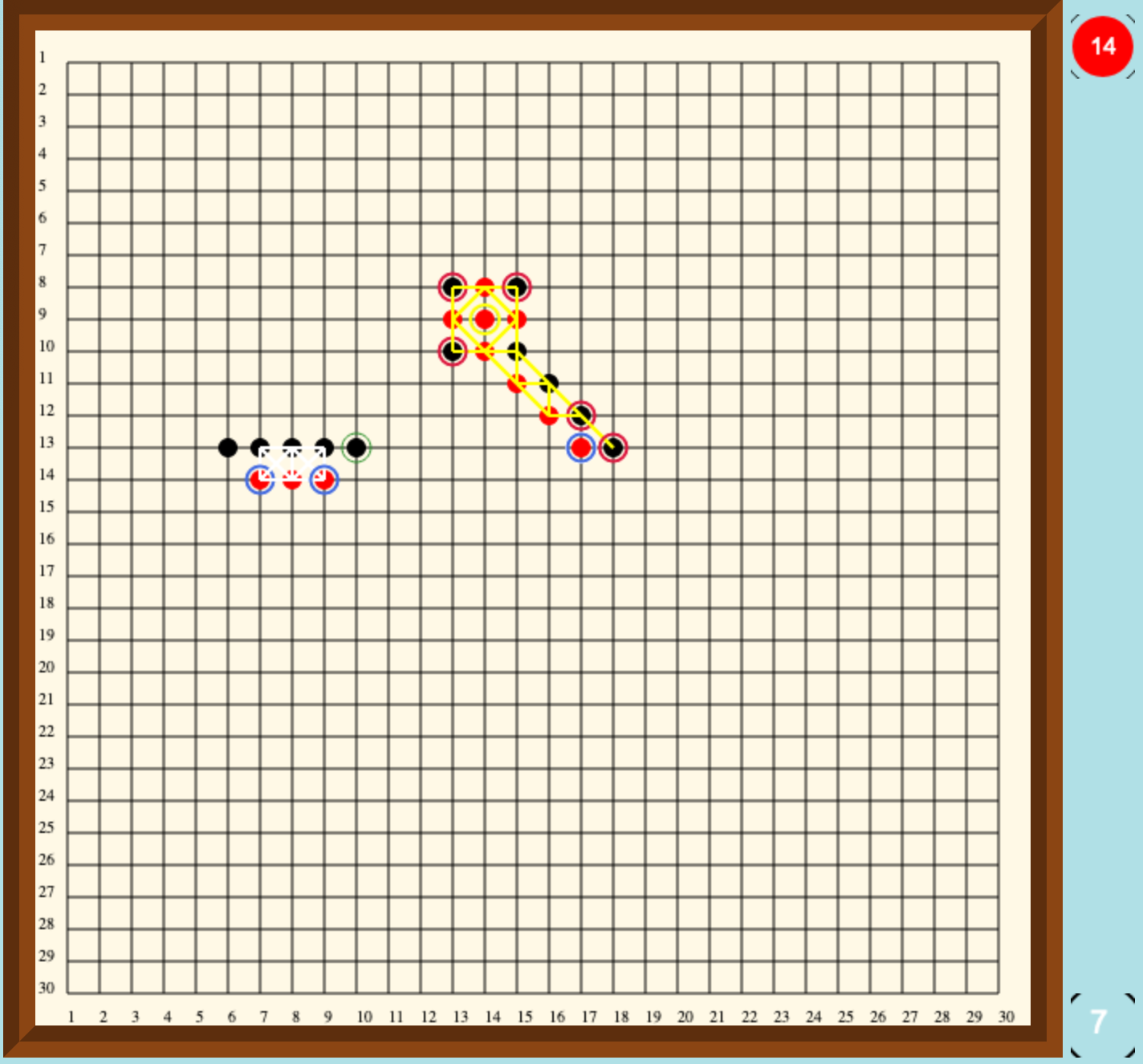
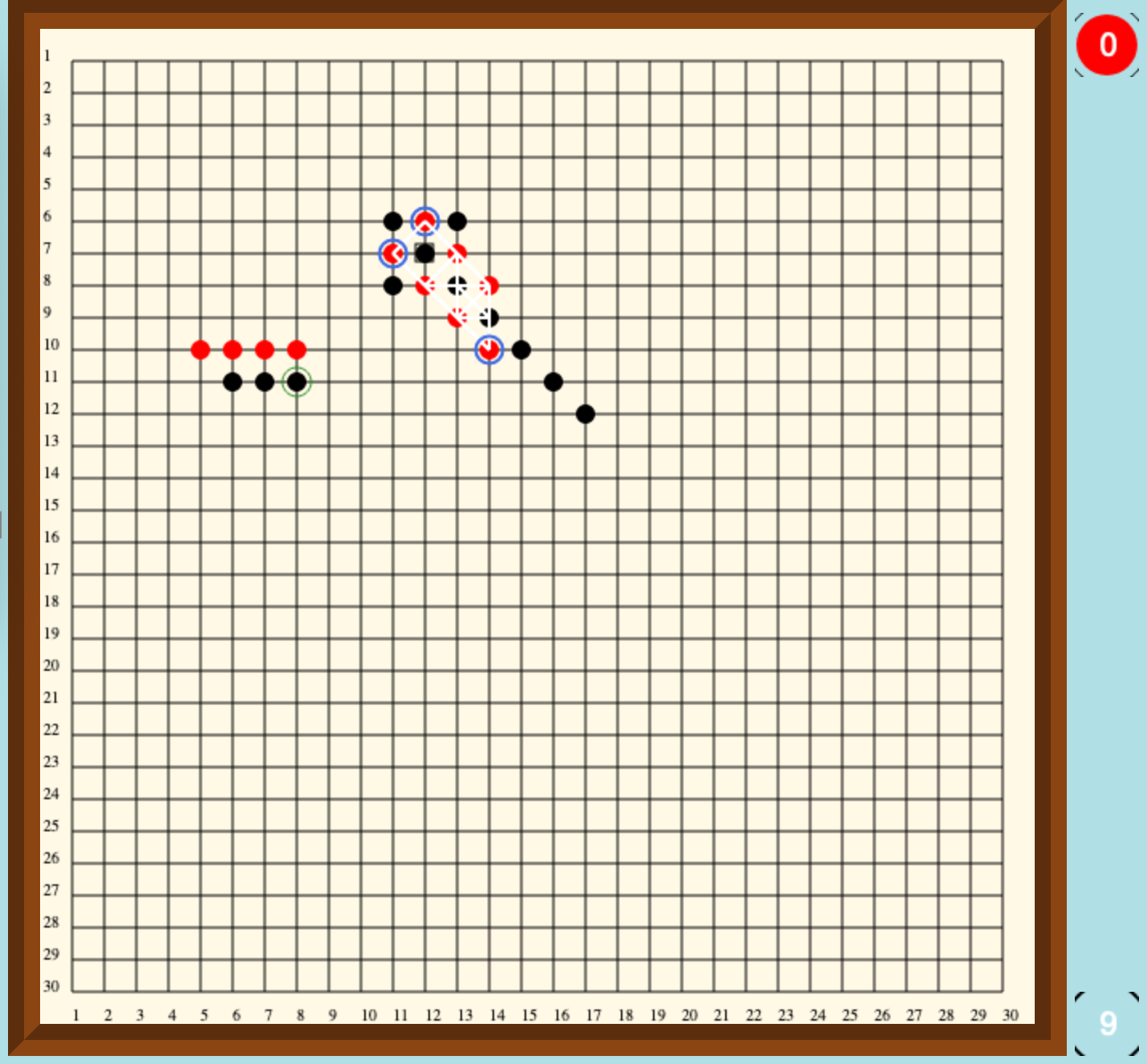
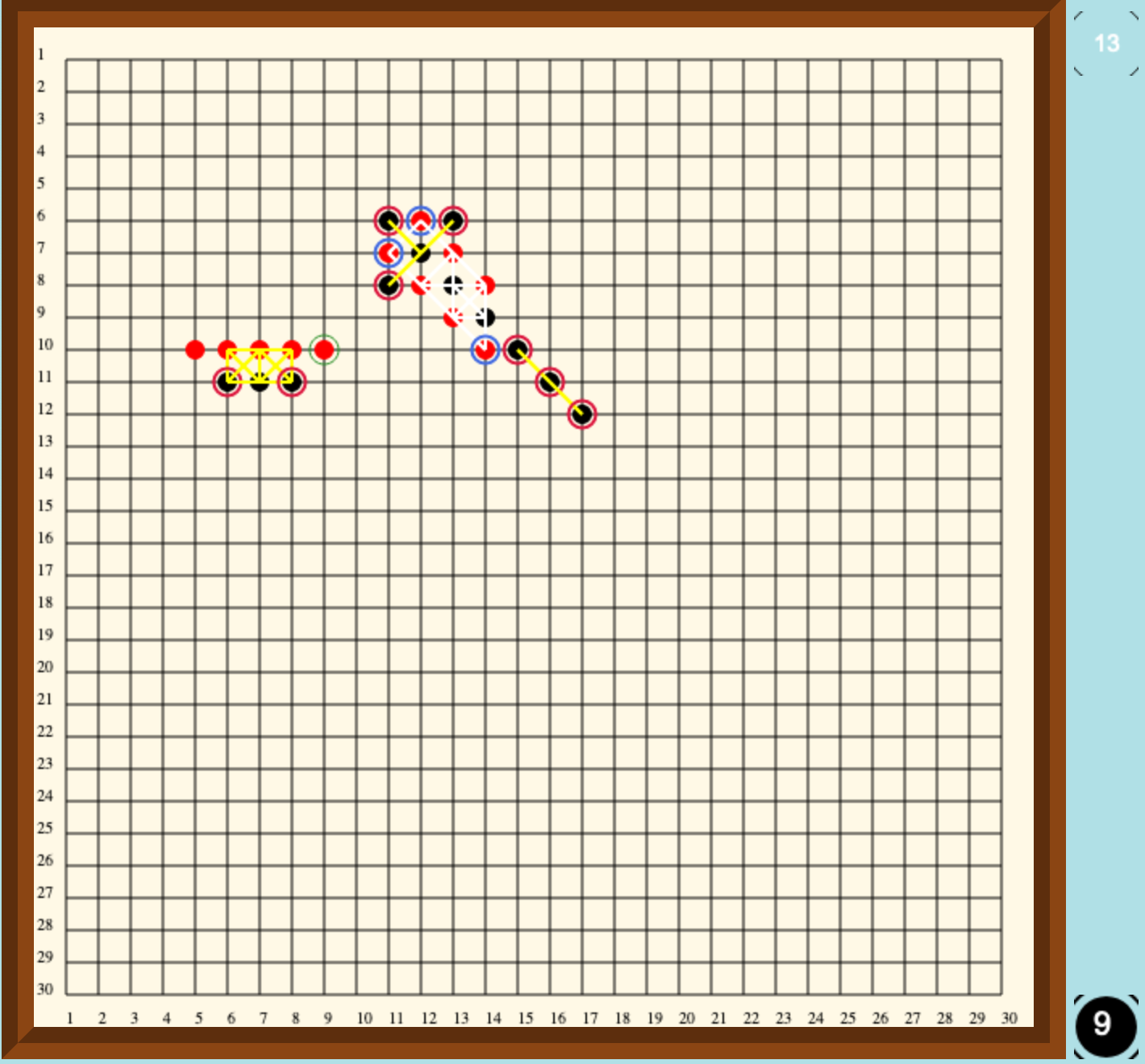
In fig.14 if Black plays (10,13), we get fig.15. In fig.14 Red has played in the siege at (14,9) Black wins the cast with (10,13) and earns 7 points.But, the red piece at (14,9) was not captured and the point goes to Red. A yellow circle is drawn around the piece to designate it for Red.
In fig.15 if Red plays (9,10), we get fig.16. At (12,7) Black has a piece that should be safe since Black has a siege there but, the siege is not tenable since the pieces at (11,6), (11,8) and (13,6) can be captured by Red thereby breaking the siege. So the would be safe piece at (12,7) is captured by Red.